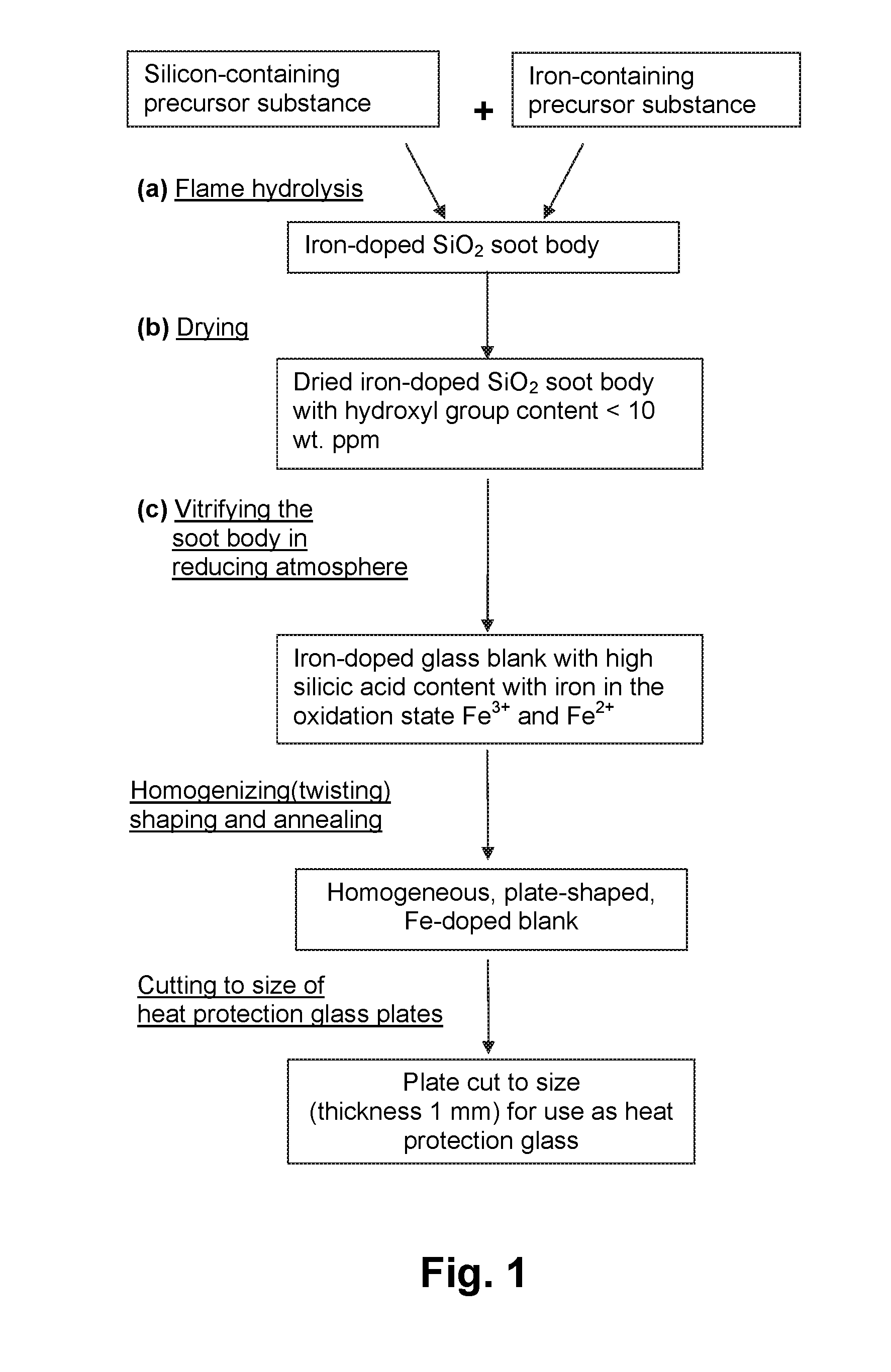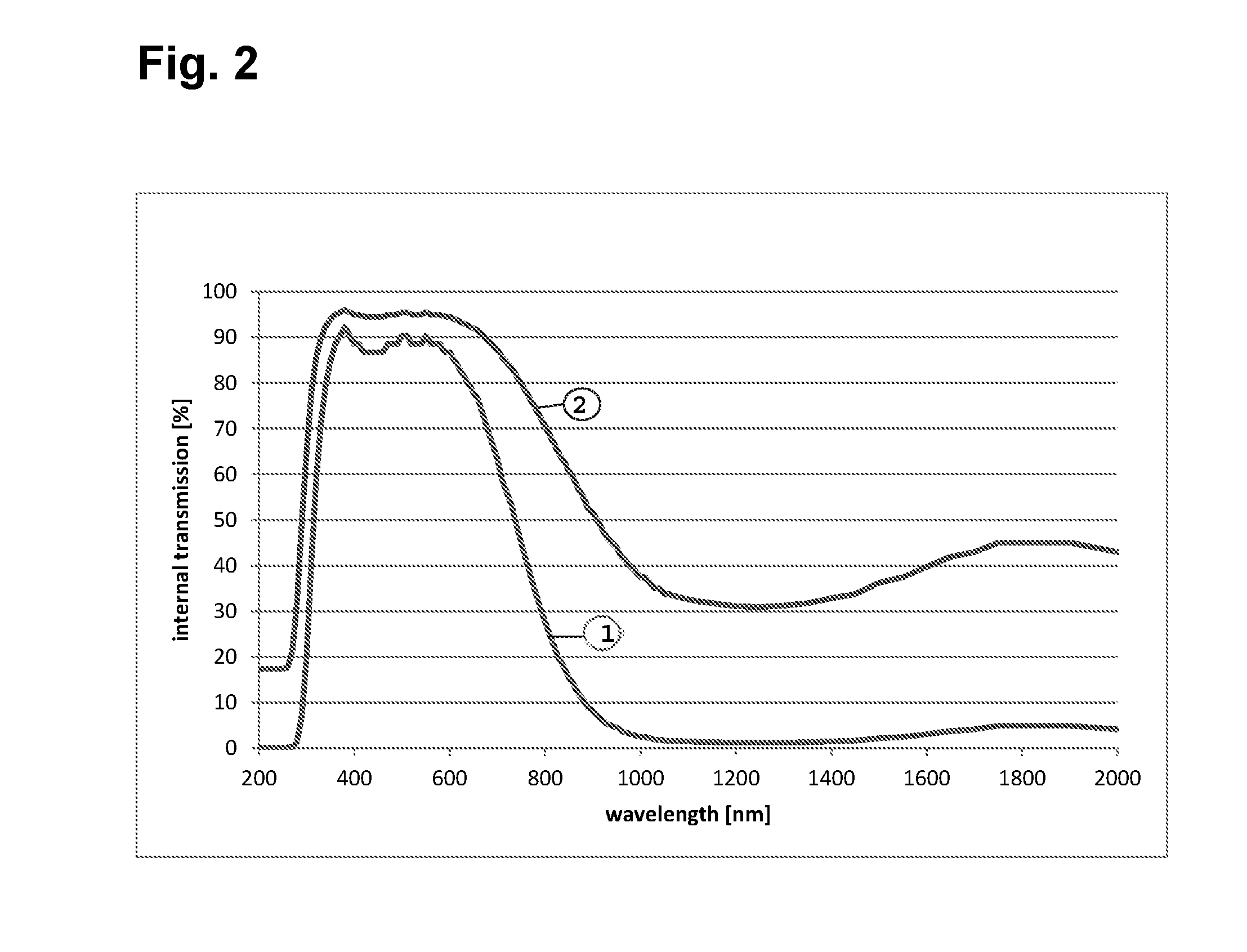Method for producing iron-doped silica glass
a technology of iron-doped silica glass and silica glass, which is applied in the direction of glass making apparatus, glass shaping apparatus, manufacturing tools, etc., can solve the problems of limiting the use of such glasses as heat protection glasses, poor transmission in the visible spectral range, and glass strongly reducing heat resistan
- Summary
- Abstract
- Description
- Claims
- Application Information
AI Technical Summary
Benefits of technology
Problems solved by technology
Method used
Image
Examples
example 1
[0036]As seen in the flow diagram in FIG. 1, a soot body is first produced by flame hydrolysis of a silicon-containing precursor substance, here octamethylcyclotetrasiloxane (OMCTS), and iron pentacarbonyl (Fe(CO)5) as iron-containing precursor substance, on the basis of the known “outside-vapor-deposition method” (OVD method). The soot body consists of synthetic silica glass which is doped with 0.8% by wt. of iron.
[0037]The soot body is dried at a temperature of 1100° C. in a heating furnace with a heating element of graphite under vacuum. The graphite, which is present in the heating furnace, effects the setting of reducing conditions, which increases the proportion of Fe2+ ions in the soot body. Upon completion of the dehydration treatment after 50 hours the hydroxyl group content of the soot body is about 10 wt. ppm.
[0038]The thermally dried Fe-doped SiO2 soot body is subsequently vitrified in a sintering furnace at a temperature of about 1400° C. for a period of 10 hours into a...
example 2
[0042]Another blank of Fe-doped silica glass is produced, as described above with reference to Example 1, with the difference that ferrocene is used as the iron-containing precursor substance and the drying process is carried out in a CO-containing atmosphere.
[0043]After deposition of OMCTS and ferrocene (C10H10Fe), the SiO2 soot body is doped with 0.2% by wt. of iron. The soot body is subsequently dried at a temperature of 1000° C., with 100 mbar carbon monoxide (residue: inert gas nitrogen or noble gases) being introduced into the heating furnace with a heating element of graphite. The reducing conditions generated thereby increase, on the one hand, the amount of Fe2+ ions in the soot body and lead, on the other hand, to an optimal reduction of the amount of OH groups. Upon completion of this dehydration treatment after 50 hours, the hydroxyl group content of the soot body is below the detection limit (<1 wt. ppm).
[0044]The dried Fe-doped SiO2 soot body which is vitrified in a hyd...
PUM
| Property | Measurement | Unit |
|---|---|---|
| thickness | aaaaa | aaaaa |
| thickness | aaaaa | aaaaa |
| thickness | aaaaa | aaaaa |
Abstract
Description
Claims
Application Information
 Login to view more
Login to view more - R&D Engineer
- R&D Manager
- IP Professional
- Industry Leading Data Capabilities
- Powerful AI technology
- Patent DNA Extraction
Browse by: Latest US Patents, China's latest patents, Technical Efficacy Thesaurus, Application Domain, Technology Topic.
© 2024 PatSnap. All rights reserved.Legal|Privacy policy|Modern Slavery Act Transparency Statement|Sitemap


